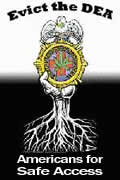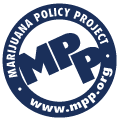|
We Update Daily!
 Custom Search Custom Search
Chris S. Kenoyer. Owner
MMJ Patient, Medical Activist, Online Patients Advocate,
Online MMJ News Journalist
My Personal Medical Bio
Follow Us Now On Twitter
@MedicalMMJMan
Or Follow Us Now
On Facebook
Email Us Here
olpwebs@yahoo.com
Or Email Us Securely Here
MedicalMMJMan@countermail.com
NEW 100% Encrypted Email Server
OLP’s Free MMJ News EList
Get The Latest In MMJ News
All Press Contact Info For Us!
Is CBD? A Possible Cure For
Breast Cancer..? And All The Other
Many Forms & Types Of Cancer..?
Learn More About " CBD" Here
***************************
Advertise Here On OnlinePot
Rates As Low As $50 a Year
24/7 – 365 Days A Year Of Sales!
***********************************
Website Navigational Links
Main Start Page 2
**************************
Latest Marijuana News Reports
*********************************
Parody’s Cartoons US
Government Grown Pot,
Term Papers, School
Reports, & Thesis’s On
Marijuana & Cannabis
*********************************
Amsterdam A to Z
********************************
Canadian Marijuana Websites
*******************************
Church’s & Pot Cannabis
*****************************
Co-Ops, Clinics, Dispensary’s
*****************************
Marijuana Doctors & Clinics
****************************
Pot Cooking Recipes
****************************
Drug Testing A To Z
***************************
Pot Games
****************************
Pot Songs Video’s
****************************
100’s Of Grow Guides
***************************
Hash A- Z
***************************
Cannabis Legal Info, Drug
Lawyers, State, Federal Laws,
State & Supreme Court Rulings
**********************
POW’s Of The MMJ War!
*****************************
Other Marijuana Websites
Websites Link Exchange!
****************************
Medical Marijuana Studies,
Research Report’s, Medical
Cannabis Clinic Study’s
****************************
Parody’s & Cartoons
When We All Need A Good Laugh!
****************************
Avoiding Online MOM Scammers
Newly Re-Updated Info!
*****************************
The Politics Of Contraband
Medical Marijuana In The Mail?
******************************
The Hall Of Shame Section
The Online MOM Scammers
*****************************
Online MOM Providers Ads
****************************
Politicians & Voters Rights
****************************
Medical Marijuana, Strains
****************************
The OG Marijuana Strain Guide
****************************
800+ FAQ Growing Questions
****************************
Patients Spiritual Guidance,
Free Online Crisis Help Center
****************************
Online Marijuana Seed Banks
****************************
Maximum Security Section
Just Updated!
*****************************
Traveling Tips, Guides, B & B’s
****************************
Vaporizers A To Z
*****************************
Online Pot Video’s & Movies
**********************************************
Please Visit Our Sister Websites!
Maine Patients Coalition.org
Reefer Madness Teaching
Museum.org
Listen Right Here Online!
To Original 1930-1950’s
Reefer Madness Propaganda
Radio Shows And Programs
Before TV There Were
"Radio Stars"



*********************************
Legal Disclaimer
Guest Book
Translate Text or Web Page Go To:
Language Tools Google Translations
Article Submissions & News
Reports Are Always Gladly
Accepted Here.

1999-2013 Copyright ?
All Rights Reserved.
No part of this site maybe used or
reproduced in whole or in part
without the written consent of the
Copyright Owner
www.onlinepot.org
OnlinePot assumes no legal liability for any products, or information or
news posted, services offered, Or
any contests or give away’s offered.
|
|
The Addict and the Law
By Alfred R. Lindesmith
Washington Post, 1961
Introduction | 1 | 2 | 3 | 4 | 5 | 6 | 7 | 8 | 9 | 10
CHAPTER 5: THE NARCOTIC CLINICS
THE Senate subcommittee under Price Daniel devoted a three-day session in September 1955 to a plan proposed by the New York Academy of Medicine to establish narcotic clinics throughout the country where addicts could receive supplies of drugs legally. This plan was worked out with considerable care and with numerous safeguards to prevent abuses, such as fingerprinting and photographing of addicts, and the suggestion that the fact of an applicant’s addiction and his daily drug needs be established by medical observation in a hospital. The clinics were then supposed to operate as out-patient dispensaries providing addicts with low cost supplies pending complete withdrawal. In the case of incurables it was proposed that they be allowed to obtain their supplies indefinitely from this source. The purposes of the plan were to take the addict out of the hands of the drug peddler and to make it unnecessary for him to commit crime to maintain his habit. Cures were to be voluntary rather than compulsory.
Because no country in the world at present deals with addicts in this manner, a good deal of the argument concerning the system is hypothetical. While most of the Western nations allow addicts access to legal drugs, none of them have clinics. For a brief period Of time from about 1919 to 192 3 some forty clinics of this general type were set up in the United States. The subcommittee, relying largely on the testimony of federal officials, took it for granted that these clinics had been abject failures and had been closed for that reason. This assumption evidently prejudiced the New York Academy of Medicine plan from the outset, and the subcommittee findings strongly opposed it.
The subcommittee’s findings on the clinic idea were formulated in ten propositions.
1. Addicts must be hospitalized, in an atmosphere free of narcotic drugs, or treatment will fail.
2. Ambulatory treatment, where a supply of narcotics is either handed to the drug addict or where he must come to the clinic for shots, is totally unsatisfactory.
3. The plan fails to consider the “tolerance” factor, which causes the addict to demand ever-increasing doses of narcotic drugs.
4. The illicit market would not be eliminated, as the tolerance factor would drive the addict to supplement his “clinic” supply from peddlers.
5. The legalized distribution of free drugs would create new addicts and increase the narcotics problem in the United States.
6. Successful rehabilitation of drug addicts cannot be accomplished under the “clinic plan.”
7. “Clinics” would maintain drug addiction, as the addict who failed to respond to rehabilitation would be given “sustaining” doses for life.
8. The “clinic” proposal would necessitate United States withdrawal from international treaties, as well as major changes in Federal and State laws.
9. Experiments with similar “narcotics clinics” in the 1920’s showed their abject failure.
10. The “clinic plan” undermines efforts to prevent drug addiction and raises a grave moral issue.’
The subcommittee then went on to say of the existing treatment and rehabilitation program that a negligible percentage of present addicts are being cured (less than 15 per cent) and suggested permanent confinement for these incurables, a suggestion which would entail, according to the subcommittee’s own estimates, the provision of new prison facilities to accommodate at least 50,000 persons. Federal prisons today house slightly more than twenty thousand inmates.
Objections to the clinic idea were many, but among the most persistent was the notion that the inherent nature of the addict is such that he will under any and all circumstances seek to spread the habit and that punitive coercive measures must be applied to him. The proponents of legalization repeatedly called attention to the fact that these assumptions are invalid in Countries like England. This argument appeared to puzzle the Senators briefly but was brushed aside. An interesting comment was a remark by Dr. H. Isbell of the Public Health Service:
I merely, say that England is not the United States; that social conditions in England are far different from those in the United States. Apparently we have an addict-prone population.2
That addicts become what they are because of the way they are treated or that the size of the problem is connected with an inappropriate plan for dealing with it are ideas which apparently have not occurred to narcotics officials.
Of the subcommittee’s ten propositions concerning clinics, numbers 1, 2, 6, 7, and 10 deal with hypothetical handicaps to the rehabilitation of addicts involved in this plan. But since it is admitted that addicts are not being rehabilitated under present circumstances, these objections amount to contending that the clinic plan would not produce a significant change in this feature of the problem.
The Senate subcommittee’s conclusions concerning the clinic plan, and, indeed, on almost all policy questions, were overwhelmingly influenced by the position of the Federal Narcotics Bureau
as expressed by its head, Mr. Anslinger, and faithfully echoed by Other lesser officials. On the matter of clinics, the Bureau has issued a pamphlet which purports to be an objective evaluation of them, but which is in fact simply a systematic attempt to discredit the clinics.3 As an historical record this document is highly unreliable and inaccurate. However, its easy availability and official sponsorship, coupled with the fact that the materials which prove its inaccuracy and unreliability must be sought in libraries, has apparently caused it to be generally accepted as the authoritative account of the clinics.
According to this document, during the year 1919 and immediately after, 44 narcotic clinics suddenly blossomed forth in this country only to be promptly closed when local authorities and local communities noted these establishments led to all sorts of evils and abuses including especially an increase of the illicit traffic and the spread of addiction.’ Actually the clinics were opened upon recommendation of federal authorities and they closed because they were ordered closed under the threat of prosecution by Washington officials. The federal officials who took this action, in the nature of the case, could nor have known about the success or failure of the clinics nor of community evaluation of them. It will be recalled that the Harrison Narcotic Act was passed in December 1914 and went into effect early in 1915. The enforcement of the act was at first put into the hands of the collectors of internal revenue, and the brief history of the narcotic clinics is therefore reflected in the annual reports of the Commissioner of Internal Revenue. The annual report covering the fiscal year from June 1918 to July 1919 (the year the clinics appeared) contains the following statement:
It is evident from the enforcement of the law as amended that provision must be made for the treatment and cure of addicts who are unable to obtain supplies of drugs necessary to meet their proper needs, as the ordinary addict, when suddenly deprived of the drug to which he is addicted, suffers extremely both physically and mentally, and in this condition may become a menace to life and property. . .
To meet immediate demands for the treatment of addicts this matter has been taken up with State and municipal boards of health, and in many instances local clinics have been established to handle this situation temporarily.5
The next year’s report shows a changed attitude toward addicts and toward clinics; an attitude of moral condemnation replaces the matter-of-fact sympathetic statement of a year earlier:
As a result of the decisions of the Supreme Court in the cases of Doremus and Webb and Goldbaum, in which it was held that the furnishing of narcotic drugs to an addict merely to satisfy his addiction, and not in bona fide medical treatment of disease or addiction, is an indictable offense, many physicians, fearing the operation of the law, refused to use narcotics in their practice. The Bureau was flooded with pleas for “permits” from habitual users of narcotics. In many of these cases the continued use of narcotics seemed necessary to preserve the health and lives of the applicants, but there is no authority of law for the issuance of “permits” in such cases. During the month of July, 1919 instructions were issued to collectors of internal revenue to confer with the United States attorneys and local health authorities in their districts with a view to devising some plan whereby bona fide narcotics cases might be properly treated.
As a temporary expedient to relieve this seemingly critical situation a number of narcotic clinics or dispensaries were established, Some of the so-called clinics that have since been established throughout the country without knowledge or sanction of this Bureau apparently were established for mercenary purposes or for the sole purpose of providing applicants with whatever narcotic drugs they required for the satisfaction of their morbid appetites. Little or no attempt was made by some of these private clinics to effect cures, and prominent physicians and scientists who have made a study of drug addiction are practically unanimous in the opinion that such clinics accomplish no good and that the cure of narcotic addiction is an impossibility unless accompanied by institutional treatment. Steps are now being taken to close these clinics which are not only a menace to society but a means of perpertuating addiction. In many cases their continued existence constitutes a flagrant violation of the law.
In 1921 there is only the brief comment:
Results obtained from closing 44 narcotics clinics formerly operated in the United States have been most gratifying. The action has been endorsed by the highest medical authorities.7
These excerpts make it quite clear that the clinics were opened on government initiative and closed by government orders at a period when drug addicts found their access to the medical profession blocked by the Supreme Court decisions referred to. The rapid rise of the illicit traffic at this time reflected the addicts inability to secure legal drugs and had nothing whatever to do with the clinics. The Narcotics Bureau document itself contends that the addicts registered in the various clinics constituted only a small proportion of the total addict population. Five years earlier, after all, in 1914 and before, when every drug store was in a sense a dispensary there was no illicit traffic!
It is also evident that Some time between July 1 1919 and June 30, 1920 a radical change in the attitude of t he government took place. A clue concerning the explanation of this about-face is provided by a description, in the 1920 Report of the Commissioner of Internal Revenue, of a reorganization undertaken during the year, in which narcotic and liquor law enforcement were merged:
Early in the calendar year 1920 the held force formerly employed under the direction of the several revenue agents in charge of the enforcement of the Harrison Narcotic Act was placed under the direction of the twelve supervising Federal prohibition agents…
The Prohibition Unit was created for the purpose of enforcing the National Prohibition Act, approved October 28, 1919… The Prohibition Unit is also charged with the enforcement of the Harrison Narcotic Law… A permanent form of organization for the unit was put into effect December 22, 1919 …. 8
The change in policy toward narcotic clinics was thus, in all probability, merely a reflection of this reorganization which replaced revenue officers with prohibition agents as the persons in charge of policy. The brief period of existence of most of the clinics, the arbitrary manner in which many were closed, and the moralistic tinge of the 1920 report all fit nearly with the theory that the new officials brought with them 2 new philosophy-that of prohibition as expressed in the Volstead Act.
One of the more ridiculous arguments advanced against the clinics in the Bureau’s pamphlet is that they perpetuated an evil habit in persons who could be readily cured of their addiction. In 1921 the Treasury Department issued regulations outlining the treatment of addiction permitted under the Harrison Act. In this publication there is the following statement:
It is well established that the ordinary case of addiction yields to proper treatment, and that addicts will remain permanently cured -when drug addiction is stopped and they are otherwise physically restored to health and strengthened in will power.9
Following this line, the pamphlet suggests that most of the addicts who attended the clinics could easily have been cured of their habits had it not been for the clinics. Thus,
Buffalo, N.Y.-the doctor in charge expressed the opinion that four fifths of the addicts could be cured if afforded institutional treatment. 10
In Syracuse the clinic doctor is reported to have claimed that go per cent of the 92 addicts there were curable; in Binghamton, N.Y., 7 2 Of 3 2 were so described and in Oneonta, N.Y., it was 24 Of 3 7. 1′
Actually, the main difference between the clinic idea and current -practice with respect to curing addiction is that in current practice the so-called cure is forced upon the addict usually by arrest and incarceration, whereas under the clinic plan it was proposed that addicts temporarily receiving drugs from the clinics would eventually voluntarily submit themselves for institutional withdrawal and attempted rehabilitation. The clinics were never intended as a means of curing addiction, but were from the beginning conceived as emergency devices to prevent the economic exploitation Of addicts by drug peddlers, It was recognized that complete withdrawal of the drug needed to be undertaken with the addict under constraint within a hospital.
The clinics were set up hastily and often by persons who knew little or nothing about drug addiction. Some of them undoubtedly were poorly operated and abused as the Bureau has claimed, but others were not. In any case most of the clinics were in operation only for an average of several months. As we have seen, the government announced that it had begun to close the clinics before July 1920 and that they had all been closed by July 1921, (Actually the Shreveport Clinic operated until 1923.) In view of the wide differences between the clinics, and the short period of operation, it is inconceivable that the Washington authorities who ordered them closed acted on the basis of knowledge of how the individual clinics operated.
The experience of the New York City Clinic ma y actually have been a decisive influence. This clinic was poorly conceived in many respects and the addiction problems in New York City were especially difficult. Daily drug rations were handed out to new applicants at an initial amount of about ten grains a day and were then cut down progressively to the minimum daily dosage that would sustain the user. There were no effective controls or checks to prevent the user from supplementing this dosage. The clinic was located in the New York slums and addicts lined up on the side walks waiting for their turn, Under these conditions it is not surprising that many users, particularly those with occupations to
attend to and with respectable reputations to consider, did not patronize the clinic. The illicit traffic, which had been negligible before 1915, had already developed to considerable proportions by
1919 and the brief establishment of 44 clinics, in which a grand total of less than 1 5,000 addicts ever registered, made no substantial inroads on it. The latter burgeoned at this time, not because of the clinics, but because of the Supreme Court decisions which caused medical men to refuse to treat addicts.
The same story applies to the rapid increase of the number of addicts in prisons during this period. cited by the Narcotics Bureau’s pamphlet as proof of the nefarious influence of clinics. Before
1915 there were very few addicts in the prisons of the land. As the Harrison Act was as interpreted in successive Supreme Court decisions and the illicit traffic became the principal source of drugs for
them, addicts appeared in jails and prisons in rapidly increasing numbers. When the clinics were closed this trend was accelerated, as was the growth of the illicit traffic.
In view of the Bureau’s claims and the common assumption that the clinics of 1919 and 1920 aggravated the drug problem, a brief glance at the federal statistics of narcotics arrests and convictions for the relevant years is pertinent. In 1918 the year before any clinics were opened, 888 federal arrests and 392 convictions for narcotics offenses were reported. In 1919, the year in which the New York Clinic operated and others were opened. arrests totaled 1,008 and convictions 582. In 1920, when the clinics, including the one in New York, were being closed, arrests rose to 1-477 and convictions to 908 In 1921. ,A-hen the Prohibition Commissioner reported in June that all the clinics were closed (one exception), arrests had risen further to 4,014 and convictions to 1,583. The yearly rise continued to a peak in 1925, -when the clinics had been closed for several years with 10,297 federal arrests and 5,600 convictions.
The Narcotics Bureau’s pamphlet relies heavily, in its negative evaluation of the Nev.- York Clinic, on the statements of two New York City health officials of that rime who were associated with it-Dr. Royal S. Copeland and Dr. S. Dana Hubbard. Only negative statements are quoted, but both of these men also had some positive things to say. All of these remarks are omitted in the pamphlet. Copeland, for example, after calling attention to the weaknesses of the scheme, added:
The clinic has served a humanitarian purpose in that it has provided a place for a careful physical examination, advice as to needed medical treatment for fundamental conditions, and careful oversight of the progress of the drug disease…. Attendance at the clinic has given the health department time and opportunity for study of the home surroundings, personal characteristics, and reliability of the patients.
The gradual but consistent reduction of the daily dosage at the clinic has shortened the period of necessary hospital treatment. Likewise, it has increased the value of residence in the hospital by sending patients in much better condition to begin with than would otherwise be the case. The clinic has given us a hold on hundreds of addicts who, without it, would be lost to the municipal authorities, and, lastly, it has made possible a steady flow of patients to the hospital, thus justifying its necessarily large personnel, and in every way facilitating the problems of hospital administration. 112
Dr. Hubbard, who also had extensive experience with the operation of the New York Clinic, disapproved of it in general and argued instead for strict enforcement of the Harrison Act, saving, “If they [addicts] cannot obtain a supply, they will reform…" Nevertheless. he also wrote the following:
The work of reclaiming the narcotic drug addict in this vicinity at least-judging from those we have seen and helped is more than worth while.
The clinic is not the solution-but it aids in bringing the secretive addict out of his ]air. He becomes friendlily [sic] disposed and, deprived of his supply, he is willing to be cured…. No doubt, with suitable organization and funds to institutionalize and adequately and properly care for them, not only to effect withdrawal of drugs, but to rehabilitate by several months after care in the open country, together with efforts to get the individuals away from bad and demoralizing associates, into new and more useful environments, many will revert to useful and normal lives.
Many of these addicts have never had a square deal, and only need a fair chan ce to change their ways. Already many of them have been returned to useful lives, and many more can be revamped with proper and necessary help.
With success in many instances in spite of the disadvantages under which the clinic was operated and under which this study has been made, we report our experiences, that others be induced to enter into this work, appreciating its difficulties and complexities, but knowing that success is possible, in many cases.13
Compared to any program for handling addicts that has since appeared, these remarks are high praise indeed, and it is small wonder that many thoughtful members of the medical profession who have read something besides official handouts should favor a return to the clinic idea.
In January 1922 a Congressman with a medical background, Lester D. Volk from the state Of New York, on the floor of the House of Representatives violently attacked a number of doctors from New York City and a small group of followers they had gathered about them.14 He charged that this group was exerting undue influence upon the Prohibition Commissioner and other Washington officials engaged in the enforcement of narcotics laws, and he accused them of engaging in a propaganda campaign designed to pervert the law and to deprive the medical profession of its right to treat addiction disease according to its own lights.
Representative Volk stated that there had grown up in the United States two schools of thought concerning drug addiction, one of which was the "habit" theory, the other the “disease” theory. The New York group which he assailed accepted and promulgated the habit theory, contending that addiction was merely a vicious indulgence which could be controlled and overcome by an appropriate exercise of will power. In accordance with this theory the medical men who espoused it advocated and supported the prohibitionist policies adopted by the government in about 1920 opposed all ambulatory treatment, and happily turned the addict over to the policeman. It is from the opinions of this New York group and the Proponents of the habit theory that most of the medical opinions cited in the Narcotics Bureau’s pamphlet were drawn. Volk specifically named Drs. Copeland, Hubbard, and Prentice as members of the small coterie under attack. The views of Hubbard and Copeland have already been touched upon. Dr. Alfred C. Prentice was a member of an American Medical Association Committee on Narcotic Drugs. According to the Narcotics Bureau’s pamphlet a member of this committee, probably Prentice, wrote as follows in 1 92 1:
Public opinion regarding the vice of drug addiction has been deliberately and consistently corrupted through propaganda. Cleverly devised appeals to that universal instinct whereby the emotions are stirred by abhorrence of human suffering in any form, or by whatever may, appear like persecution of helpless human beings; lurid portrayals of alleged horrible suffering inflicted on addicts through being deprived of their drug; adroit misrepresentation of fact; plausible reiteration of certain pseudoscientific fallacies designed to confuse the unscientific mind; downright false statement [Sic], and insidious innuendos assiduously propagated are brought to bear on an unsuspecting public to encourage it to feel pity for the miserable wretches, whose name is legion, we are told, and whose sufferings, hysterically exaggerated, are graphically served up to be looked on as if the y were actually being made victims of persecution by the authorities, who would deprive the wretches of even the drug they crave.
The shallow pretense that drug addiction is a disease which the specialist must be allowed to treat, which pretended treatment consists in supplying its victims with the drug which has caused their physical and moral debauchery – . . has been asserted and urged in volumes of literature by the self-styled specialists.15
The same author spoke of addiction as follows:
The vice that causes degeneration of the moral sense, and spreads through social contact, readily infects the entire community , saps its moral fiber, and contaminates the individual members one after another like the rotten apples in a barrel of sound ones.16
This is the language of the prohibition tract rather than of the medical profession. The appearance of this language and this attitude in various reports and resolutions of bodies within the American Medical Association at that time was undoubtedly directly connected with the influence of men like Prentice and others referred to by Volk and indirectly associated with the triumph of the prohibition movement in general.
In opposition to the habit theory, Volk lists Drs. George E. Pettey and E. S. Bishop.17 He could also have included Drs. C. E. Terry, M. Pellens. E. H. Williams, and many other figures. As we have seen, the Supreme Court of the United States adopted the disease theory in 1924 in the Linder decision and would certainly, not have done so if this view had not had high standing and competent representation in medical circles. Representative Volk notes that while the American Medical Association in a number of official actions after 1920 supported the government’s program, another important national body, the American Public Health Association, opposed it in action taken in 1921. 18 Numerous editorials and comments criticizing the manner in which the Harrison Act impinged on doctors appeared throughout the country at this time’s In a number of instances clinics were sponsored and supported by local medical bodies, which also resisted the government orders closing them. All of this demonstrates beyond any reasonable doubt that the government’s program of closing to addicts all avenues of legal access to drugs did not have the undivided support of medical authorities at the time, and that the latter were in fact engaged in a bitter controversy on the question.
The following remark by Congressman Volk was evidently directed at the narcotics agents who collected the materials cited in the Narcotics Bureau’s pamphlet on clinics:
… It seems to me that the untutored narcotic agents of this great Government under the last administration might have been better employed than in taking sides in a medical controversy involving the broad subject of what will or will not constitute the proper medication in the treatment of addiction. Yet this was done, and I am sorry to say is now being done by our Government, and will continue to be done until the end of time unless some protesting voice is raised against undue interference by lawyers, policemen, and detectives in the practice of medicine, and the furtherance of its research and study.20
Concerning the influence of the New York group on Washington, Volk said:
There has developed a tendency in carrying out the objects of the Harrison law to substitute for the provisions of the act arbitrary administrative opinions expressed in rules and regulations which amount to practically 2 repeal and nullification of the law itself.
These rules and regulations have been promulgated by those in charge of the administration of the Harrison law upon the representation and statements coining as official pronouncements of the New York City, Board of Health, presented by a particular small group or clique among whom stand out prominently the names of Royal S. Copeland, Health Commissioner of the City of New York, Drs. E. Elliot Harris, S. Dana Hubbard, Alfred C. Prentice, and a lawyer, Alfred C. Greenfield. Reliable records, reports, scientific information, and experience have been swept aside by these men and in their place has been Set Up 2 campaign of publicity intended in the end to benefit this small coterie who seek to control the avenues of narcotic treatment throughout the country.
The agitation emanating from New York City from these men and the Department of Health is spreading over the entire country and knowingly or unknowingly has evaded and ignored sound medical findings. As a substitute for open discussion of known medical facts there has been set up a propaganda for the incarceration of all drug users, their treatment by routine methods, and complete elimination of the family doctor. An undeniable effort is now being made whereby physicians are to be denied any discretion and power in the prescribing of narcotic drugs and to force all those addicted to the use of these drugs into hospitals exploiting questionable “cures.”21
Volk, with prophetic accuracy, warned of the “calamitous” effects likely to follow from the government’s policy, referring to the daily parade of criminal and non criminal addicts in the courts, the mistreatment of addicts by the police, and the rapid growth of the illicit traffic. He also commented upon the “mysterious orders” from Washington which closed the clinics shortly after they opened without explanation except that Washington officials had “changed their minds.”
TWO VERSIONS OF THE SHREVEPORT CLINIC
No reliable information is available concerning most of the forty-four clinics which were opened in the United States and a full and accurate appraisal of them remains to be written. it is the general impression today that the one in Shreveport, Louisiana, was one of the most efficiently operated. It was also the last to close after an existence of about four years. In order that the reader may judge for himself the reliability of the Federal Narcotics Bureau’s pamphlet, we reproduce here in full everything which it has to say about the Shreveport clinic, and following this, there is an account of the same clinic taken from Charles E. Terry and Mildred Pellens, The Opium Problem, a recognized scholarly and authoritative work.
Shreveport: according to the Narcotics Bureau.22
It was estimated that 75 per cent of the drug addicts in Texas made their headquarters at Shreveport following the operation of that clinic. One addict in Texas was apprehended receiving a package through the mail containing 8 grains of morphine sulphate bearing the label of the .Shreveport clinic. The defendant stated that he had a friend in Shreveport who obtained 20 grains of morphine from the clinic daily and that he always received half of it.
Forty per cent of the addicts gave a history of venereal disease or examination showed its presence.
In this clinic many fugitive offenders were caught by the police and sent back to places where they were wanted.
The clinic sold monthly $2,500 worth of narcotics, at a monthly profit of about $1,800
Several prostitutes attended the clinic and plied their trade on the streets of Shreveport. One, 19 years of age, and another 23, had never been addicts until they registered at the clinic.
The addicts said they would take less drugs if the cost were higher; in some cases daily amounts were increased from 5 to 8 grains to to grains daily. Addicts who had used 2 grains daily before coming to the clinic were demanding 10 grains. Addicts who got supplies at the clinic sold to other addicts who would not attend. Many of the addicts came from distant States and said they would be off drugs if it were not so easy to procure them. One addict who had never taken drugs previously was induced to buy drugs from an addict in attendance at the clinic and later was persuaded to accompany her to the clinic. The former made a regular practice of selling narcotics she got from the clinic and of getting morphine from other persons she persuaded to go to the clinic.
One citizen of Shreveport Stated: “The clinic is an outrage; it should be discontinued; it brings a lot of bums here; nothing is safe on the streets, and the quicker the clinic is closed the better.’; Another stated: “One of the greatest things that can be done for this community is to close the narcotic clinic.” These statements were typical of the public opinion on the subject.
Evidence showed a continuous traffic in narcotics between the clinic patients and others, and that numerous persons who had never used drugs previously, or who had been cured of addiction over several year periods, registered at the clinic and using as high as 10 grains daily. Many of the persons used fictitious names and addresses, and were without visible means of support. One addict stated that when he came to Shreveport before the clinics were established, the same doctor who was in charge of the clinic had cured him of drug addiction, after which he had discontinued the use of drugs for 18 months. As soon as the clinic went into operation he applied for 8 grains of morphine a day, and when his case was investigated he was receiving 12 grains daily at the clinic from the same doctor who had previously cured him of addiction. Another addict who had been cured of addiction before he registered at the clinic stated that “it would be one of the finest things that ever happened if there were not a grain of morphine obtainable, because the only reason that myself and others are addicts is due to the fact that the stuff is so easy to get in Shreveport.”
One addict went direct to Shreveport from Leavenworth Penitentiary where he had served a year for narcotic law violations. He was put on the clinic register and given 10 grains of morphine daily. A woman who had been off drugs for a considerable length of time before she went to the clinic was receiving 11 grains of morphine daily.
There was a continuous illicit narcotics traffic being carried on in Shreveport, both in supplies procured from the clinic, and in narcotics obtained elsewhere by peddlers. It was never possible to procure evidence of illicit sales of drugs as agents were always confronted with bottles bearing the clinic label.
This clinic was conducted not only in violation of the Harrison Act but in defiance of orders of the Louisiana Medical Association a year prior to the date in 192 3 when it finally ceased operations.
Shreveport: according to Charles E. Terry and Mildred Pellens. 23
Historical Sketch
Inception, Development, Municipal Activity, Reasons for Closing
During 1916, four physicians of Shreveport were indicted for violating the Harrison Act. They were not convicted but the incident had a psychological effect upon the medical profession as physicians hesitated, as Dr. Butler says in his report, to care for cases of addiction lest they unintentionalIy violate the federal law, avoiding the handling of these cases rather than studying the law, the case itself and the problem as a whole.
This state of affairs became apparent to Dr. Butler, the parish physician, as the chronic users of opium applied to him for assistance and very quickly developed a sociologic problem which the community was not equipped to handle. Some of the cases were sent to jail for treatment and either were withdrawn from the drug or supplied by smuggled drugs. A number of them died.
Eventually the use of four rooms in the jail was secured for the treatment of these cases but because of the inadequacy of equipment and of the difficulty in stopping the smuggling of the drug, this work was not successful.
In 1919 the state board of health appointed a physician in Shreveport to take charge of the narcotic situation. He wrote all the prescriptions of these cases, which were filled at one authorized drug store. This arrangement lasted but one month, its failure being due to three factors: first, the expense and trouble to the patient who was required to secure daily prescriptions when he could patronize the peddler more easily; second, the impracticability of one physician’s attempting to care for so many cases without assistance; third, the druggist’s objection to having his store patronized by a class of people looked upon by the public as criminals.
The physician who had been appointed to handle this situation resigned and Dr. Butler was instructed by the state board of health to care for these cases by establishing a dispensary. That the need of some provision was increasing is shown by the following excerpt from a letter to Dr. Butler from the president of the stare board of health:
“We are getting daily the names of patients being discharged from the Army and Navy who reside near Shreveport and who should be sent there for treatment, but as yet we are unable to refer them there.”
Dr. Butler organized his dispensary and with the assistance of a pharmacist and special assistants supplied the drug to chronic users according to state regulations which will be explained later. Quarters in the Charity Hospital were secured for the treatment of curable cases. During the first two years the number of patients handled at the dispensary was reduced from 494 to 188, some having been cured and others in one way or another eliminated.
On March 15, 1921 the Louisiana State Board of Health after consulting with the federal narcotic officials discontinued the narcotic dispensaries in New Orleans, Alexandria, and Shreveport. Upon the following day Dr. Butler reopened the Shreveport dispensary and moved the institution for treatment from the Charity Hospital to a house near the business center of the city. He continued to work on his own responsibility as parish physician and through the authority of the city council of Shreveport, expressed in the following ordinance:
"(1) That a public health hospital and outpatient service be, and the same is hereby established for the City of Shreveport.
“(2) That said institution shall be under the charge and control of the City Council of Shreveport and its management subject to the supervision of said Council, shall be under the direction of Dr. Willis P. Butler, Parish physician until such time as it may be otherwise ordained by this body. The purpose of said institution is declared to be for the treatment of narcotic and venereal cases.
“(3) Be it further ordained, That whereas the Police Jury of the Parish of Caddo defrays a portion of the expenses of said institution that said Parish physician is empowered to care for and treat the same class of patients for the Parish of Caddo.”
The last clause of this ordinance shows that the Police jury had already taken action. In fact previous to and anticipating the state board of health’s order to close the dispensary and institution, the Police Jury had passed a resolution To continue Dr. Butler’s narcotic work. This briefly outlines the inception and development of the dispensary and institution for treatment. The need of municipal action begins with the indictment of the four local physicians already mentioned and had its final expression in the passage of the ordinance continuing the method that the council had found to be effective. During the years 1921-23 this arrangement controlled satisfactorily the narcotic problem. One hundred and forty patients were given curative treatment while the number of cases attending the dispensary was decreased to one hundred and one.
Early in 1923 a conference was held in the office of the United States District Attorney between Dr. Butler and the federal narcotic agents. As a result of this conference it was decided to close the dispensary. The agent present at the conference stated that he had been sent “to close the clinic because it was the only one left in the United States.” In commenting on this Dr. Butler quoted from -a letter written by Dr. L. M. Powers, Health Commissioner of Los Angeles, California who said when the Los Angeles clinic was closed in 1921
“I have not been able to realize the actual purpose of the closing of our clinic for there has been some unseen motive prompting much opposition to clinics which I have not been able to comprehend.”
THE DISPENSARY METHOD OF OPERATION – RESULTS
The dispensary was located in the director’s laboratory in the Shreveport Sanitarium with the following personnel: medical director, chief clerk and bookkeeper, assistant clerk and finger-print expert, pharmacist, dispenser, three inspectors selected with the approval of the police department, the local board of health and the medical director; other assistants for special work were employed when needed.
The dispensary days Were Monday, Tuesday, Thursday, and Saturday from 8:30 to 10:00 A.m. and from 4:30 to 6:oo P.M. Where these hours created 2 hardship on the patient he was cared for at some more convenient rime.
Morphin was dispensed in solution, the container being labelled to show !he amount in grains and the price. The doses varied from one grain to as much as twelve grains a day for certain patients, the average being eight grains. In each case the amount of morphin dispensed was the least that the patient could take and still remain in “drug balance.” Since the dispensary was not intended for curative treatment but as a means of caring for incurables and chose physically unable to undergo treatment, no effort was made to reduce the amount finally decided upon as the patient’s proper dose.
The cost of morphin as supplied at the dispensary Was an important matter as will be explained later. The wholesale price of the drug, varied from two to three cents 2 grain. The dispensary price was six cents a gram as against the druggist’s price of ten to twenty-five cents a grain, exclusive of the prescription fee, and the peddler’s price of $1.00 a gram. Under the dispensary management the difference between the cost and the selling price paid the actual operating expenses of both the dispensary and the institution for treatment, the entire undertaking being self supporting.
Patients admitted to the dispensary were carefully examined and recorded. In the beginning any patient applying was admitted but the number was necessarily limited later to residents of the state and again later to residents of Caddo Parish. They were divided through examination into the curable and incurable cases and placed in one of the two classes. Complete medical histories were taken, together with information relating to age, sex, color, length of time during which the drug had been used, former treatment, and the causative factors, together with an exhaustive physical description. Fingerprints with personal description were sent to the local police department, to the local detective agency and to Leavenworth.
Before being dispensed to, the patient was requested to sign a pledge not to sell, give away, lend, borrow, or otherwise obtain any of the drug. His residence and business addresses were secured and frequently checked by inspectors. All patients able to do so were required to work and to secure proper food and clothing. No loafers were tolerated.
These rules governed patients who were not infirm, decrepit, or bedridden.
A monthly record sheet contained the names of the patients. Upon receiving their medicine patients signed this register, the clerk entering opposite the signatures the amount dispensed in grains and the price paid. This daily record was kept of those coming to the dispensary in person. For those Who were bed-ridden or who held a doctor’s certificate as to infirmity a special order form printed on safety paper was employed. These were serial in number, dated and signed, and gave the reasons for the individual’s inability to come in person. together with the name of the authorized proxy. Only one order form was issued at a time and a strict record kept of each.
The institution for treatment was located at the Charity Hospital until the work was discontinued by the state board of health in 1921 when it was established in another locality. It was called the Public Health Hospital and in addition to treatment for chronic users of opium it provided treatment for cases of venereal disease either free or at the cost of the medicine. This institution had a resident physician, superintendent, nurses, guard, and attendants.
The rules governing the institutional treatment of the narcotic patients were as follows:
“(1) Institutional treatment is free to any resident of Caddo Parish.
“(2) An addict who is able physically to undergo treatment must sign voluntarily an application for commitment to the institution. (If he is ‘judged physically able and will not take the treatment he is no longer dispensed to.)
” (3) He also signs a request to be placed in the Parish jail to complete the treatment if for any reason this may be deemed necessary by the Director.
"(4) He is required to make a deposit of twenty-five dollars for his own use at the end of treatment, unless he is known to be in good financial circumstances.
"(5) The medical method of treatment is divided into three parts, (1 ) Previous preparation; (2) the period of narcotic withdrawal under restraint; (3 ) after care. By the first term is meant, assurance that the physical condition is strong enough to endure the rigor of the withdrawal. The salient features of the treatment proper, are rapid withdrawal and substitution, proper elimination, abundant food, rest and warm baths. By the third term is meant, a place of convalescence, preferably in the country.”
RESULTS
Dr. Butler states that the results from the points of view of the users, physicians and druggists, and society at large from a properly operated dispensary and institution for treatment have a distinct medical and sociological value.
First: The patient. Such a treatment prevents or alleviates a great deal of physical suffering. The dispensary and treatment institution treated 211 cases including the parish prisoners. The curables were treated first for whatever physical conditions they were suffering from and then for their drug intoxication, while the incurables were improved physically and their doses properly regulated. Many, cases who had been “down and out” were raised to a plane of decent living. With their drug inexpensive and regularly supplied they were enabled to work and provide for their families. In the opinion of the Associated Charities, federal and parish authorities and the city police department, crime was prevented and the narcotic problem from every angle was ameliorated by the medical care of these patients.
Second: Physicians and Pharmacists. The system was helpful to physicians and druggists in that it saved much of their time and prevented annoyance from the insistent demands of individuals for whom they could not regularly care. It prevented duplication of work for one patient and neglect of others. That the medical profession appreciated this work is shown by its unqualified support and approval of the clinic as evidenced by the passage of resolutions to this effect.
Third: Society as a whole. That the work of the clinic was beneficial to society as 2 whole is apparent. It reduced the number of future users and the system that made the dispensary effective became an auxiliary, to the city’s police department. Dishonest and unworthy cases were detected, cut off from the dispensary and because of the absence of peddlers in the city were forced to move away Thus crime was prevented, as there was no profit possible for criminal addicts or peddlers. A considerable burden of indigency was saved the city by the rehabilitation of these patients.
RELATION OF CLINIC TO:
1. Peddling
2. Federal and state-control measures
3. Other methods of control.
1. It prevented peddling and the pauperizing of the user. It prevented illicit sale by, (a) providing for the incurable cases, preparing the curables for treatment and treating them, whereas the peddler deliberately increased his sales by, creating new users and (b) eliminating the vicious type of user.
2. The chief manifestation of federal control has been the arrest of users in order to stop the illicit traffic. This method of control, according to Dr. Butler, only, aggravates the situation as it makes dependents of the user’s family-, which thus creates a social and economic problem.
Dr. Butler quotes the United States Marshal as having stated that through taking advantage of the facilities afforded at the clinic he was able to secure quick relief without the unnecessary resorting to red tape required under other circumstances. Through the detective system practiced by the dispensary- many- arrests of peddlers were made and evidence sufficient to convict them secured, but Dr. Butler states these cases when brought into court were either repeatedly- postponed or dismissed.
3. Another method of control that Dr. Butler claims is a complete failure is that of the enforced treatment of users. This procedure results in repeated relapses, deaths, or suicides during the withdrawal, or smuggling of the drug into the institutions in which these cases are confined,
In this connection Dr. Butler gives the following acknowledgement from the state board of health president: “Your statistics in cures are decidedly higher than those of any others we have received.”
In conclusion he states that federal and other state control measures employed have failed to give such good results as were derived from the operation of the dispensary and the institution for treatment, namely:
One responsible organization to control supply.
Proper facilities for observation, examination, and treatment of patients.
Ability to care for incurable cases without expense to the community and at but slight expense to the patients.
A self-supporting system.
Since the closing of the dispensary, Dr. Butler reports the deaths of several former patients, three of these in jails in other cities, while 2 number of his patients have been sent to the State penitentiary. Of the remainder of the one hundred and one incurable cases, Dr. Butler continued to care for forty for about a year. The others he states were supplied by peddlers at $1 or more a grain inasmuch as their physicians refused to care for them. Individuals who during the life of the dispensary were leading decent lives and supporting their families reached a condition of wretched poverty. In 1924, the number of incurables attended by Dr. Butler was reduced to twenty-four our and then to twenty one. These were continued until March, 1925, when he ceased prescribing for them. Of the forty cases remaining in his care after the closing of the clinic, four have died, two or three found other physicians to care for them temporarily, a few moved away, and the others have been forced to patronize peddlers.
The organized charities, he states, recognize the evil effects of the closing of the clinic and the city police department and the sheriff report that they are having endless trouble with users and peddlers. Petty crimes are increasing and the peddlers are creating new cases.
The following communications supplied by Dr. Butler from professional groups are of interest in connection with the operation of the Shreveport narcotic clinic:
“To the Shreveport Medical Society:
“This committee appointed to investigate and report on the Shreveport Narcotic Clinic begs to report as follows:
“We had an interview with Dr. Butler at his office on September 29th, and wish to express our unqualified approval of the work being done by Dr. Butler and his associates. We were most favorably impressed by the conduct of the Clinic including the details of compete records Of all addicts coming under care, classification of addicts, and treatment according to classification, the elimination of non-residents of La., and the careful treatment of curable cases Under restraint, the procuring of employment for addicts who are able to work while attending the dispensary and for cured patients who wish to remain in Shreveport after recovery, are all features of this work that strongly recommend the conduct of this Institution.
“It is significant that Dr. Butler’s judicious and tactful conduct of the Clinic has secured for him the unqualified support and cooperation of the Federal, State, Parish and City Authorities, and the State and City Boards of Health.
“In brief we wish to express our unqualified support and approval of the Shreveport Narcotic Clinic and its systematic and effective administration by Dr. Butler.
“Signed:
W. H. Billinghaley, M.D.
J. J. Frater M.D.
J. G. Pou M.D.
Committee
“This report was presented to the Shreveport Medical Society at the regular meeting Oct. 5, 1920, and was unanimously adopted.
“Shreveport, La.
“March 15, 1921."
“At a regular staff meeting of the T. E. Schumpert Memorial Sanitarium held at the Sanitarium Tuesday night, March 15, the following resolution was unanimously adopted:
“Resolved that, in the judgment of the Staff of the T. E. Schumpert Memorial, that, for the best interest of humanity and the community, it is advisable that Dr. Willis P. Butler continue the so-called narcotic dispensary and institution as now conducted in the City of Shreveport.
“The following doctors were present at this staff meeting:
J. C. Willis, B. C. Garrett, J. R. Knighton, J. J. Frater, J. M. Bodenheimer, J. G. Pou, F. G. Ellis, S. C. Barrow, T. D. Boaz, R. F. Harrell, M. S. Picard, M. R. Purnell, I. B. Hougon, Thos. Ragan, Dr. Harwell, Dr. Yerger
“Signed: W. S. Kerlin, Sec’y-Treas."
“Dr. Willis P. Butler Shreveport, La.
“Dear Doctor:
“The. following resolution was adopted by the Staff of North La. Sanatorium, at its regular monthly meeting last night, March 22nd, 1921.
“Resolved that, in the judgment of the Staff of the North La. Sanatorium, that, for the best interests of humanity and the community, it is advisable that Dr. Willis P. Butler continue the so-called Narcotic Dispensary and institution as now conducted in the city of Shreveport, La."
The following Doctors were present:
Dr. D. H. Alverson
Dr. S. C. Barrow
Dr. J. At. Gorton
Dr. A. G. Heath
Dr. R. F. Harrel
Dr. L. H. Pirkle
Dr. Thos. F. Ragan
Dr. M. R. Purnell
Dr. C. B. Hicks
Dr. R. A. Pain
Dr. G. C. Rigby
Dr. J. E. Slicer
Dr. V. Simmons
Dr. J. F. Tanner
Dr. Wm. P. Verger
Dr. Hearn
“Yours Truly,
“(Signed) J.M. Gorton, MO.”
The striking disparity between these two documents is too obvious to require much comment. Suffice it to say that, in the light of the detailed, factual, and documented account provided by Terry and Pellens there is hardly a single general statement about the clinic in the Bureau’s account which can be accepted as accurate or which does not require serious qualification. The opening sentence, for example, contains the assertion that it was estimated that seventy-five per cent of the addicts of Texas made Shreveport their headquarters. It is further stated that many of the addicts came from distant states, presumably other than Texas. Yet, during the entire period of its existence only 1,237 addicts were registered at this clinic, and in one year, 1920 only 331 nonresidents were treated .24 The reasons given by the Bureau for the closing of this clinic are obviously false.
It is easy to understand that many busy law-enforcement officers would find it much simpler and easier to read the Narcotics Bureau’s version, broadcast to them without charge and requiring no special exertion from them, than to dig up the account in Terry and Pellens’ book. It is not so easy to understand how it has been possible for other officials to ignore the latter account as completely as they have. Whatever the reason for it may be, the present public version of the history of the United States narcotic clinics of the 1920’S is based overwhelmingly on the Bureau’s document.
CLINICS AND THE BRITISH PLAN
Finally, it should be repeated that the clinic plan bears almost no relationship to British practice. English officials become noticeably and justifiably irritated when their scheme is described as the
“clinics ystem,” as it often is in the United States. American opponents of drug law reform have adopted the tactic of merging and confusing the two ideas, thus making it possible to discredit both by citing the Bureau’s pamphlet and rendering an actual study of the British system superfluous.
Introduction | 1 | 2 | 3 | 4 | 5 | 6 | 7 | 8 | 9 | 10
Notes
1. Treatment and Rehabilitation of Narcotic Addicts: Report of the Committee on the judiciary, U.S. Senate, containing the Findings and Recommendations of the Subcommittee on Improvements in the Federal Criimnal Code pursuant to S. Res. 67 and S. Re5. r66, 84h Cong., 2.d sess., S. Rep. No. i85o (Washington, D.C.: U.S. Government Printing Office, 1956), PP. 3-12.
2.. Daniel Subcommittee Hearings, Part 5, p. 7035
3. Bureau of Narcotics, U.S. Treasury Department, Narcotic Clinics in the United States (Washington, D.C.: U.S. Government Printing Office, 1953).
4. Ibid., P- L
5. Annual Report of the Commissioner of Internal Revenue for the Fiscal Year ended June 30, igig (Washington, D.C.: U.S. Government Printing Office), p. 6 1.
6. Ibid., for 1920, PP. 3 3-34.
7. Ibid., for 192 1, p. 29.
8. Ibid., for 1920, PP. 29-3 3.
9. Cited in C. E. Terrv and M. Pellens, The OPium Problem, P- 758.
10. Narcotic Clinics in the U-S., P- 7.
I I. Ibid.
12. Daniel Subcommittee Hearings, Part 5, P. 1706.
13. Ibid., PP. 17 18- 19.
14, Narcotic Drug Addiction: Speech of Hon. Lester D. Volk of New York in the House of Representatives, Friday, January 13, 1922
(Washington, D.C.: U.S. Government Printing Office, 1922).
15. Quoted in Daniel Subcommittee Hearings, Part s, p. x869, from
page i of the Narcotic Bureau’s pamphlet, Narcotic Clinics in the U.S.
16. Ibid.
17. Narcotic Drug Addiction, p. ji.
18. Ibid., p. 8.
ig. See, e.g., C. E. Terry and M. Pellens, The Opium Problem, pp. 993-96.
2o. Narcotic Drug Addiction, p. 12.
2 x. Ibid., P. 3.
2z. Narcotic Clinics in the U.S., pp. 12-13.
23. C. E. Terry and M. Pellens, The Opium Problem, PP. 864-72.
24. Ibid., P. 40.
Introduction | 1 | 2 | 3 | 4 | 5 | 6 | 7 | 8 | 9 | 10
|






 Button Ads!
Button Ads! 






